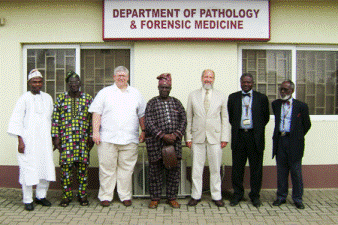Natural Resources, School of

Karl Reinhard Publications
Document Type
Article
Date of this Version
12-2019
Citation
Korean J Parasitol Vol. 57, No. 6: 627-633, December 2019
https://doi.org/10.3347/kjp.2019.57.6.627
Abstract
The study of coprolites has been a theme of archaeology in the American Southwest. A feature of archaeoparasitology on the Colorado Plateau is the ubiquity of pinworm infection. As a crowd parasite, this ubiquity signals varying concentrations of populations. Our recent analysis of coprolite deposits from 2 sites revealed the highest prevalence of infection ever recorded for the region. For Salmon Ruins, the deposits date from AD 1140 to 1280. For Aztec Ruins, the samples can be dated by artifact association between AD 1182-1253. Both sites can be placed in the Ancestral Pueblo III occupation (AD 1100-1300), which included a period of cultural stress associated with warfare. Although neither of these sites show evidence of warfare, they are typical of large, defensible towns that survived this time of threat by virtue of large populations in stonewalled villages with easily accessible water. We hypothesize that the concentration of large numbers of people promoted pinworm infection and, therefore, explains the phenomenal levels of infection at these sites.
Included in
Archaeological Anthropology Commons, Ecology and Evolutionary Biology Commons, Environmental Public Health Commons, Other Public Health Commons, Parasitology Commons


Comments
This is an Open Access article distributed under the terms of the Creative Commons Attribution Non-Commercial License